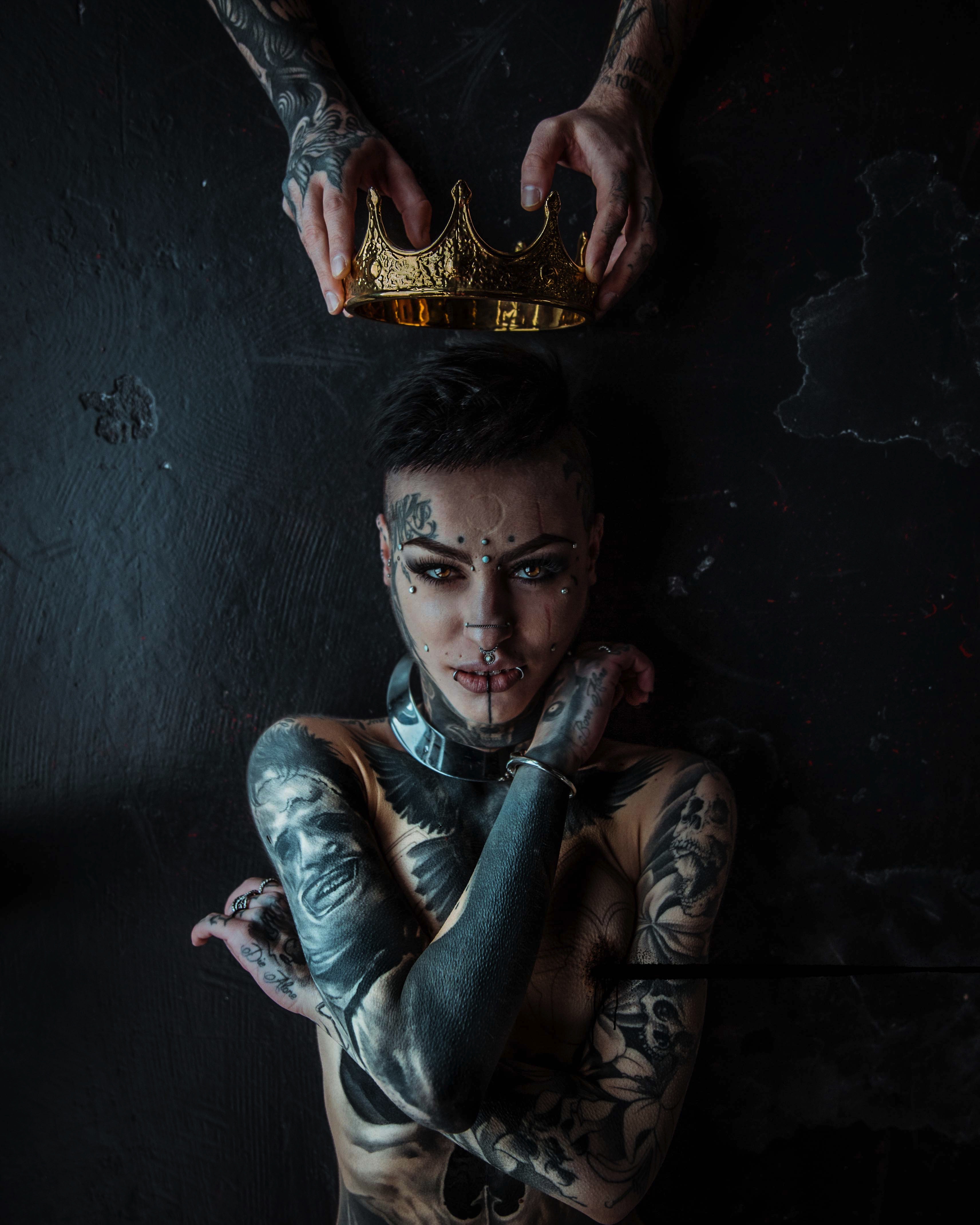Last Updated on 11/11/2021 by Chris Gampat
All images by Sudhir Ramman. Used with permission.
“Many people find this incredibly difficult because it involves fully creating a scene and not just capturing it,” explains Sudhir Ramman. Indeed, Sudhir is a bright star shining at night while you’re at sea. You can’t help but not stare at his work. And a part of it is because he’s actually, truly creative. There isn’t a whole lot like the work he produces. He’s into concepts and not gear. However, Photoshop and Lightroom are very important to Sudhir. So too is natural light!
The Essential Gear of Sudhir Ramman
To be honest, I don’t own a lot of gear. I shoot with a Canon 5d Mark IV and a 35mm f1.4 sigma art lens. All I need is a full-frame camera and a lens that allows me to capture the depth of field just how I want it. This ensures I shoot the images in high quality to ensure they are suited for cropping and prints. Sporadically I use a 24-70mm sigma art lens for shooting from a wide-angle. In terms of lighting, I use daylight. Editing is an integral part of my style, and my programs of choice are Lightroom and Photoshop. They allow me to break through the boundaries of color and contrast to create the right atmosphere. It’s part of my signature.
The creative process kicks off when I combine these elements with models and props. My gear is only a small part of the bigger picture, and I really believe you don’t have to spend a fortune to make great work.
Before I got a studio, I used to shoot at home or in random hotel rooms. It’s forced me to learn to find the right spot, right angle, and right light in a shoot very quickly. Assessing and anticipating the situation quickly still helps me to this day in all my shoots.
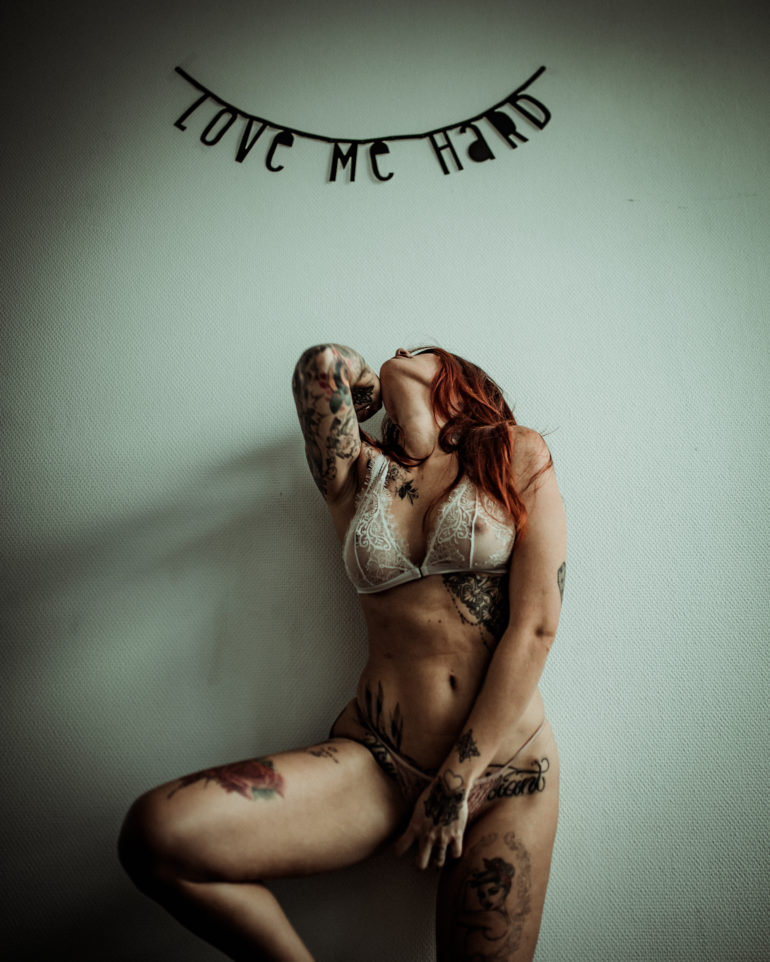
Talk to us about how you got into photography.
About four years ago, I bought my first camera, a Canon 750d. I had no idea how it worked or what I going to do with it. I did know that I wanted to capture people differently, deviating from the standard. Standard is boring. So is standard training, so instead of getting a formal education, I watched tutorials and taught myself via trial and error. After my first shoot, I uploaded the images to Lightroom and was immediately hooked to photography and editing. I still had an office job at the time but started shooting every weekend and edited every night after work. All my free time was devoted to photography. ‘Good’ is never enough; I was dedicated to becoming better and better. Two months after my first shoot, I bought my first full-frame camera, a Canon 6D, and a 35mm f1.4 Sigma art lens. Things took off from there.
What made you want to get into portraiture?
When I started, I instantly knew I wanted to photograph people. People are all different but alike at the same time. Anomalies versus similarities. That’s what makes this an interesting subject to me. I always try to capture people as I see them.
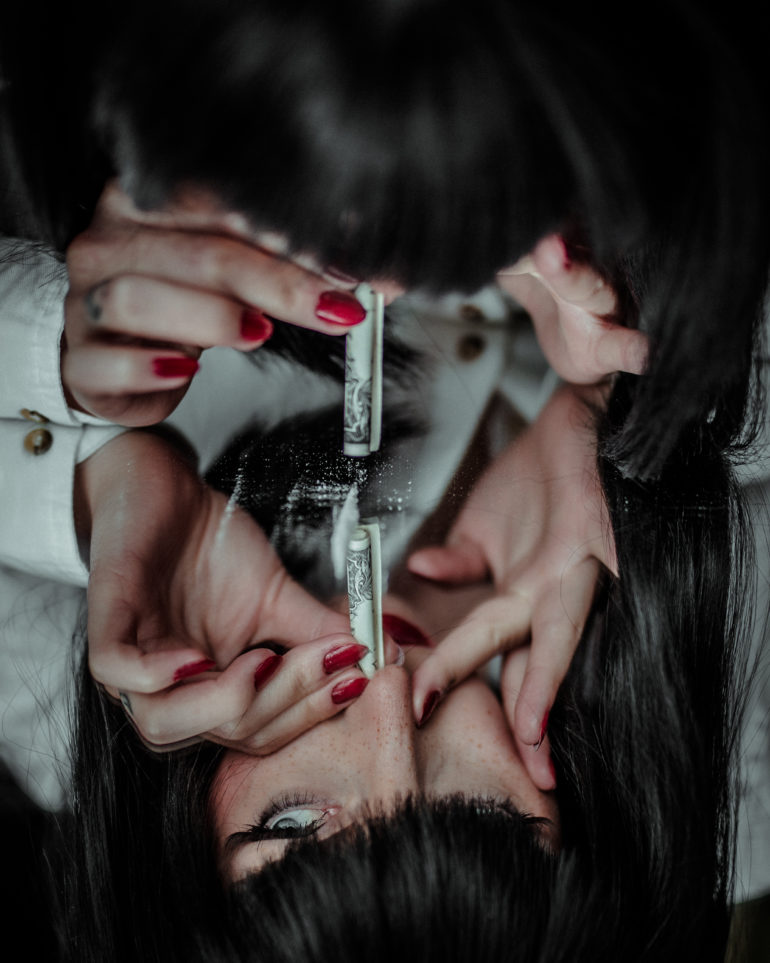
So how did you get into conceptual portraiture?
Many people find this incredibly difficult because it involves fully creating a scene and not just capturing it.
Like every creative, my work evolves over time. I first started off doing more basic black and white portraits, and I quickly realized I had to challenge myself more. With every shoot, I started adding elements that made the result more interesting to me. This evolved into dreaming up entire concepts, stories, and settings. The aim is to tell a story through photography.
Where are you drawing your ideas and inspiration from? I feel like when I look at your work, you’re approaching it like the entire thing is your canvas to paint on.
I have always been drawn to the cinema. The art of visual storytelling through emotions, sets, lighting techniques, and color grading is a very noticeable influence in my work. Much in my own way, I use these techniques in my photography to create my own worlds. Each image I produce feels cinematic. Every aspect of the visuals is deliberate. Each model plays a specific role. However, every viewer is free to interpret and give meaning to the image in his/her/their own way.
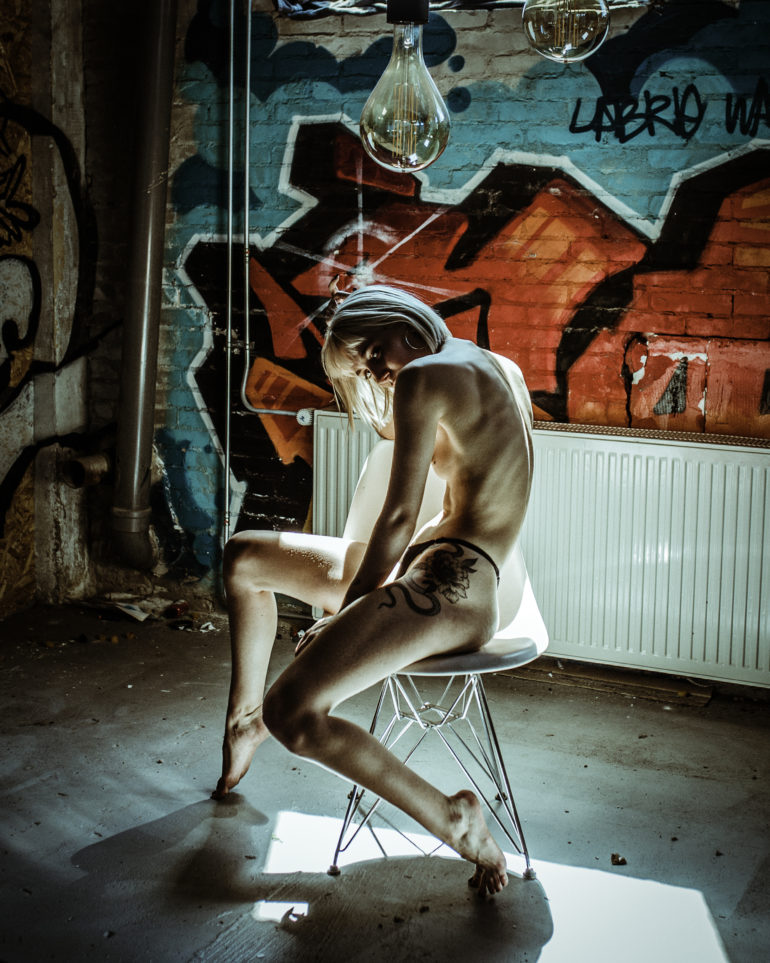
When I go through your work, I see a ton of color. But I also see loads of blue and cooler shades. Are you using these as a creative expression like Picasso did with his blue period?
I love to work with different color palettes, so I experiment with loads of them. The blue and green tones are mostly inspired by movies and tv series: Fight Club, Old Boy, Mr. Robot, City of God, Fear and Loathing in Las Vegas, Snatch, and Breaking Bad. To me, these shades add a visual representation of emotion.
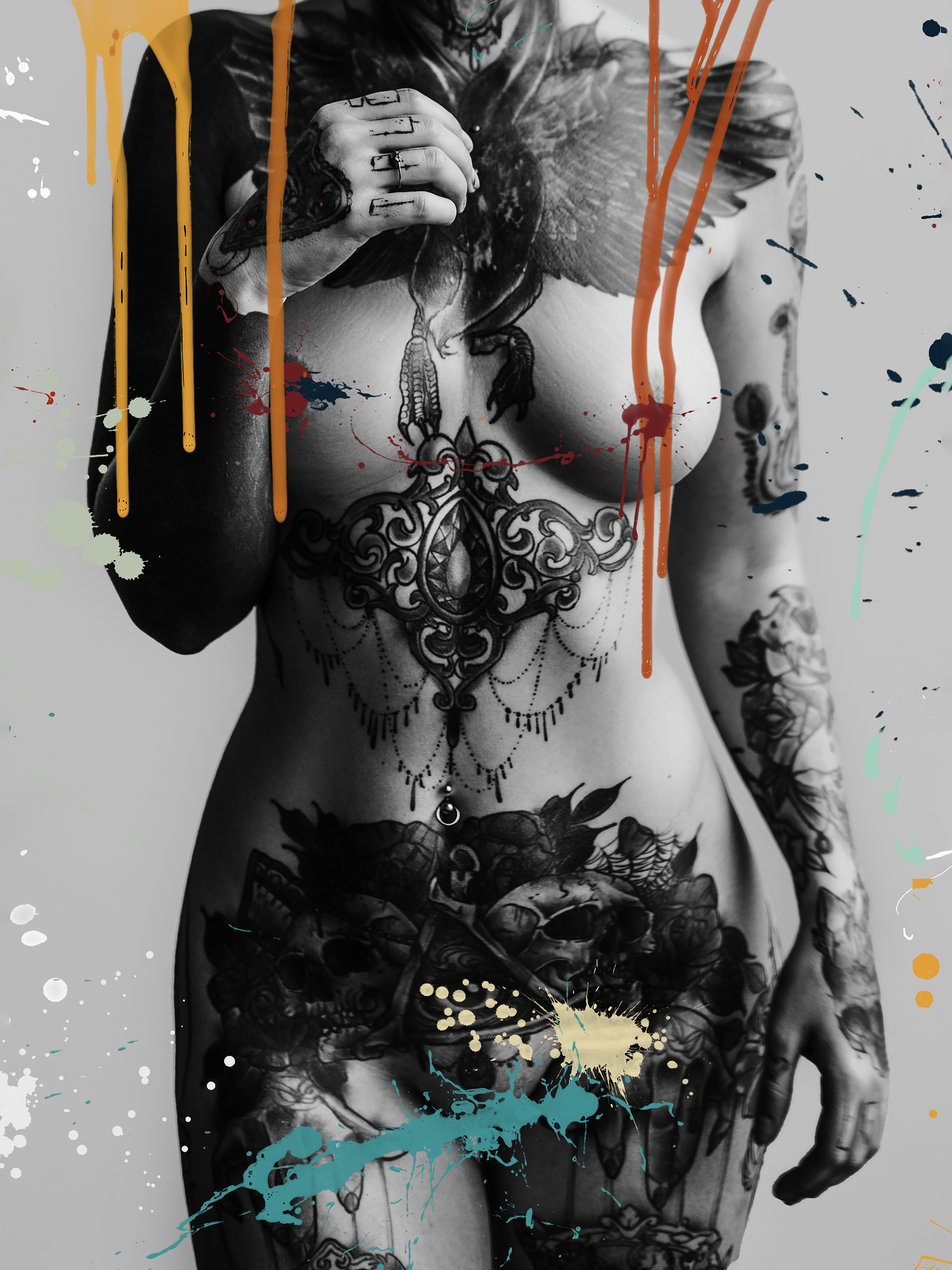
Talk to me about your compositions. You’re all over the place randomly and awesomely. Sometimes you’re close up and low down. At other times you’re low down looking up. Yet you can also be up high. How experimental do you get?
I never set boundaries for expressing myself through photography. I hate the so-called ‘rules’ that limit what you can and cannot do. Fuck that. If I want to shoot something a certain way, that’s exactly what I’ll do. Freedom to do what you want unlocks creativity.
You seem to use a variety of props. You seem to like balloons, paint, powder, etc. You’re also using a lot of water and fluids. How do you go about picking and figuring out what to use on each shoot?
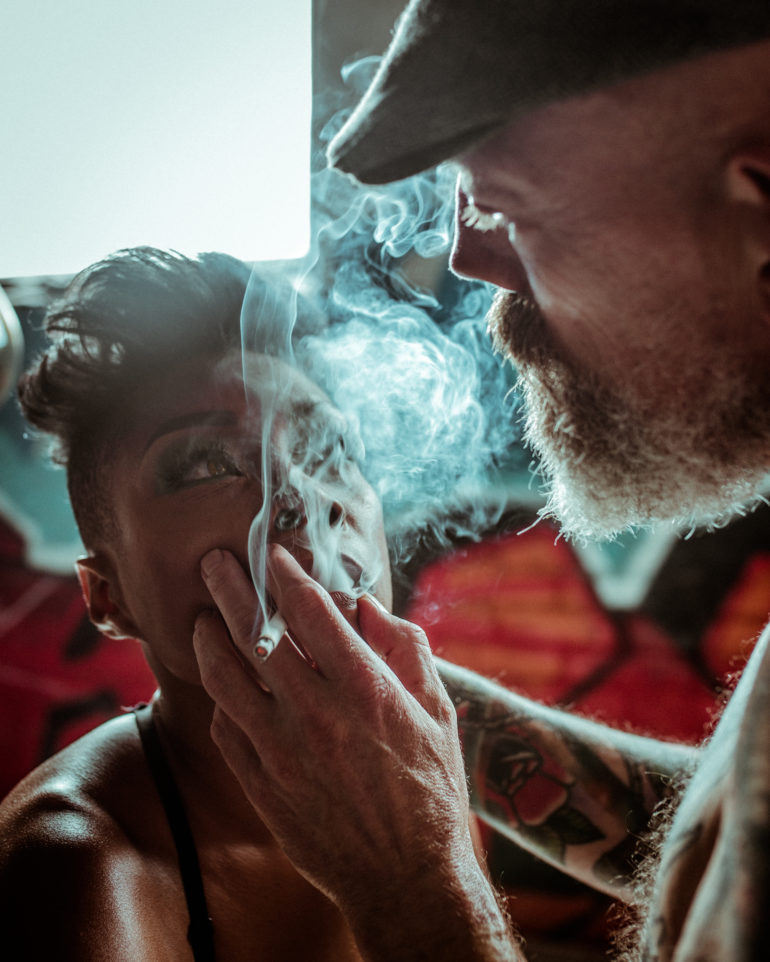
What props to pick per shoot differs based on the concept I’d like to shoot. Props can be deliberate, used to send a specific message, or can be random. Whether they have a special meaning, happen to lay around, or be in a specific color, I need to make my color palette work. Anything can be a prop.
What are your thoughts on Photoshop and retouching?
Photoshop and Lightroom are very important to my creative process. Lightroom and Photoshop enable me to go beyond, break the standard. Without it, the images that are inside my mind would never breakthrough into the real world. Retouching is to me what a brush and paint are to a painter.
How do you think the pandemic has changed you as a creative?
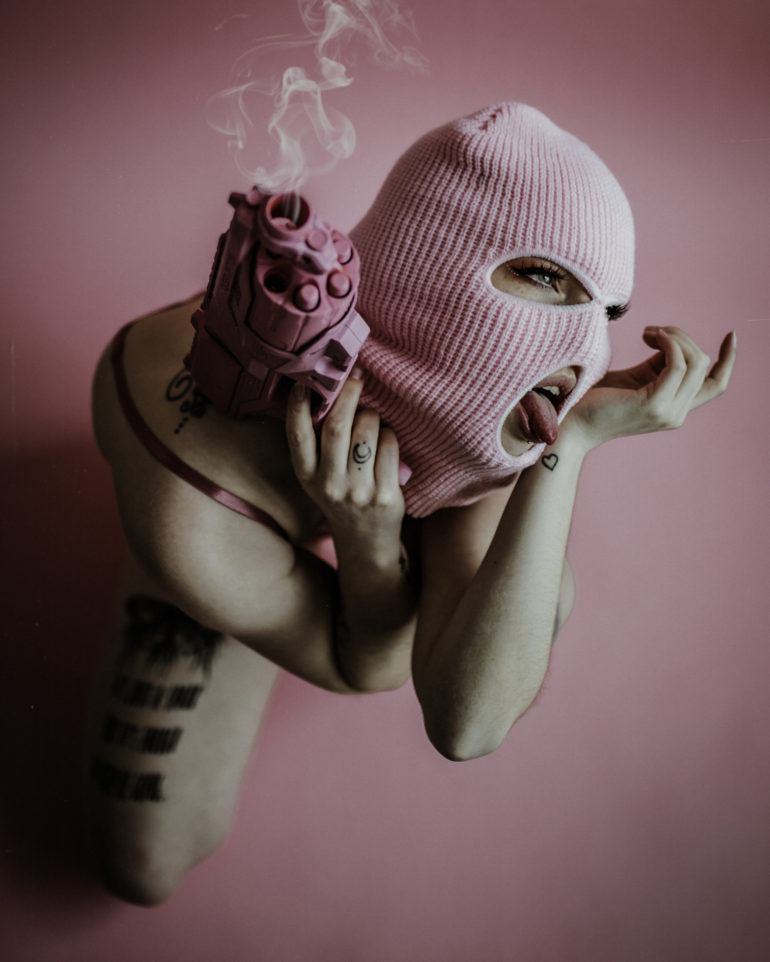
Before the pandemic, I mainly used Lightroom for retouching. I had spent so much time training my Lightroom skills that there were few new things to uncover. The pandemic made me slow down a bit, which allowed for more time to explore different things. I immersed myself in Photoshop in a way that I hadn’t before and explored new ways of editing.
Slowing down on some fronts has also meant gearing up on others. Because of the pandemic, I cut back on the number of shoots I do and focused more on selling my prints. As is the case for so many entrepreneurs, the pandemic has shifted my business model.
How do you want your career to evolve this year? And how do you plan on getting there?
Currently, I am working on multiple projects that excite me. There is the ‘Misfits’ project, where I collaborate with 6 international tattoo artists to create mixed media artworks. I have shot 6 different nude images of 2 models (@chajagirard & @ariarainbow) and sent the canvas prints to the 6 artists: Sad Amish Tattooer, Carlos Macias, Jen Tonic, Yanina Viland, Jay Freestyle, and Julian Sieber. They have proceeded to do their own thing to the canvases, resulting in 6 very different pieces. Each piece has a unique combination of my and the other artist’s style. This project will launch soon, and I cannot wait to present it to the world.
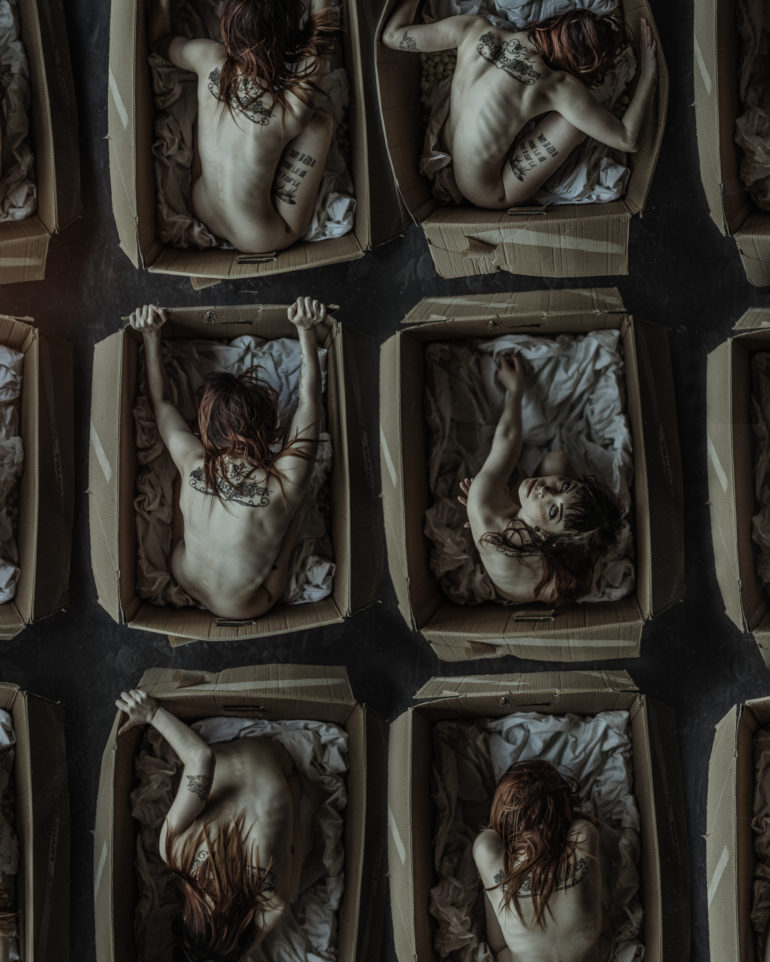
This year, my hope is to keep on doing projects like this one, where I test the creative limits and bring my concepts to life. Whether this is on my own or in collaboration with other artists, I want to do projects that energize me. The only way to do this is by daring to take risks. No guts, no glory, right?
Speaking of glory, the aim is to have my own solo exposition in Tokyo or New York. Or, who knows, both.
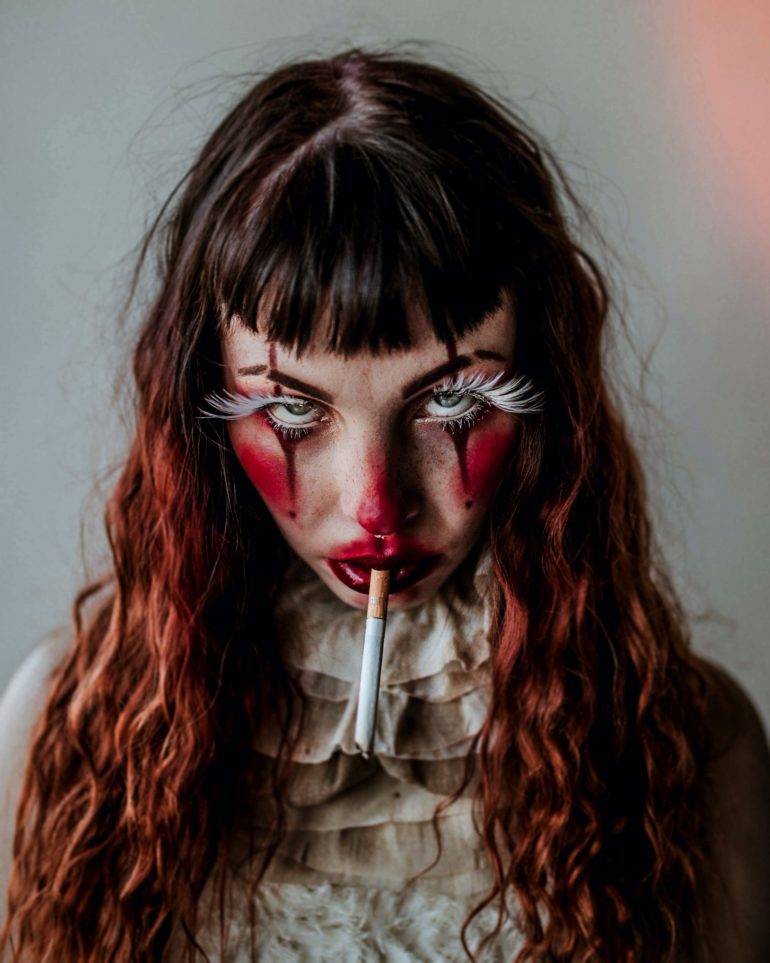
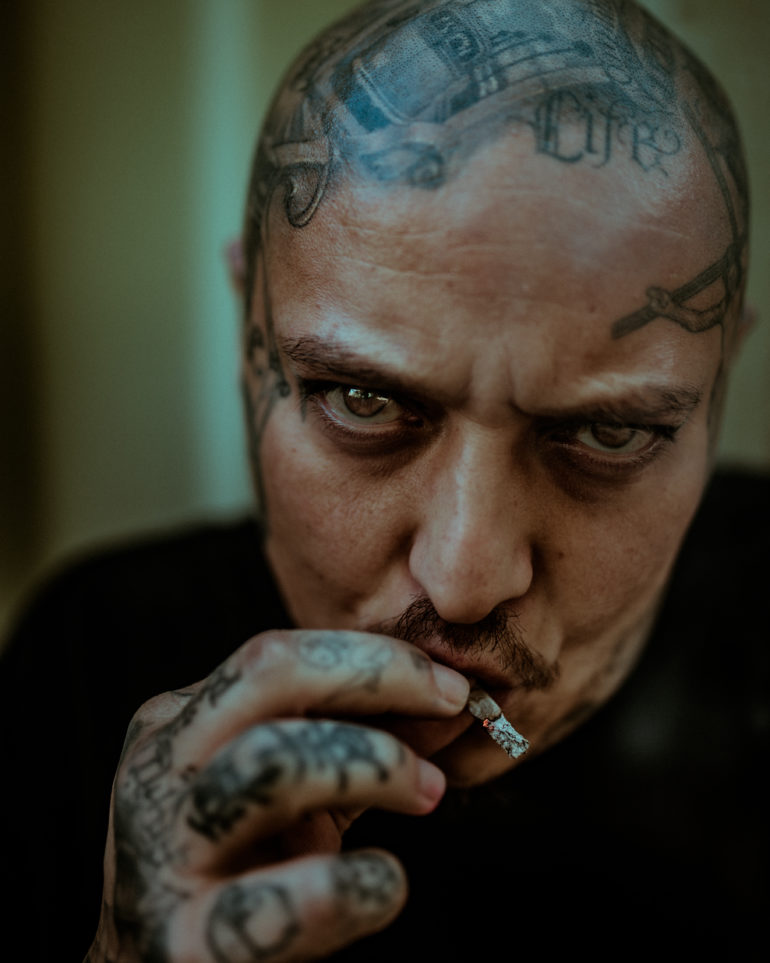
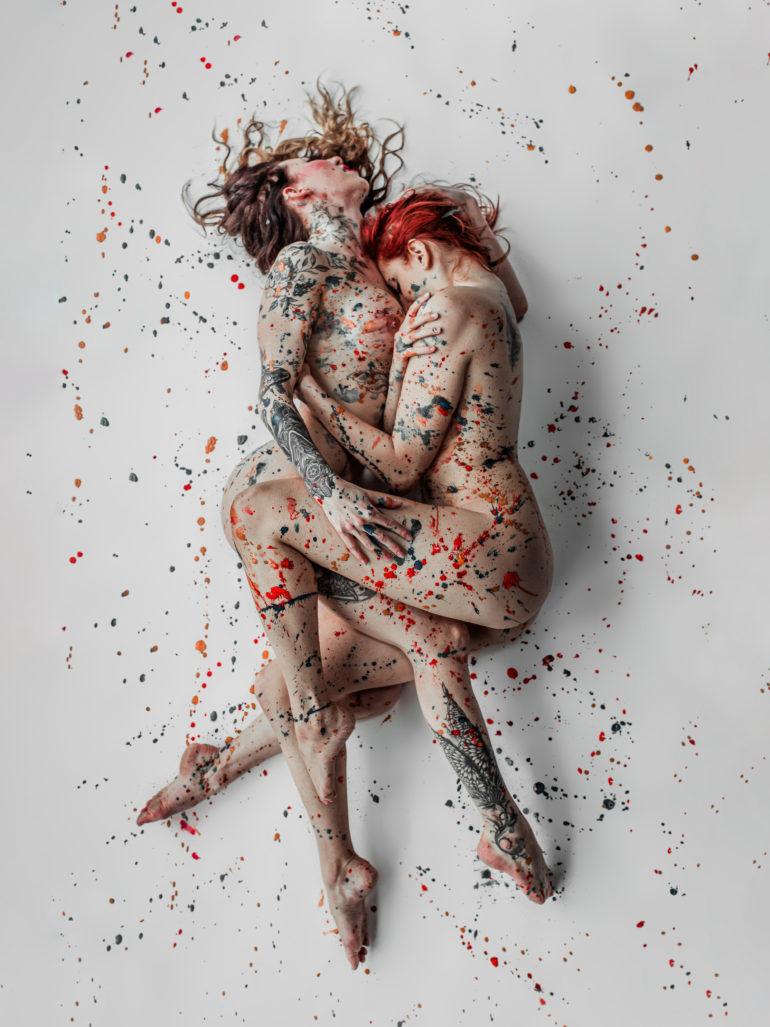
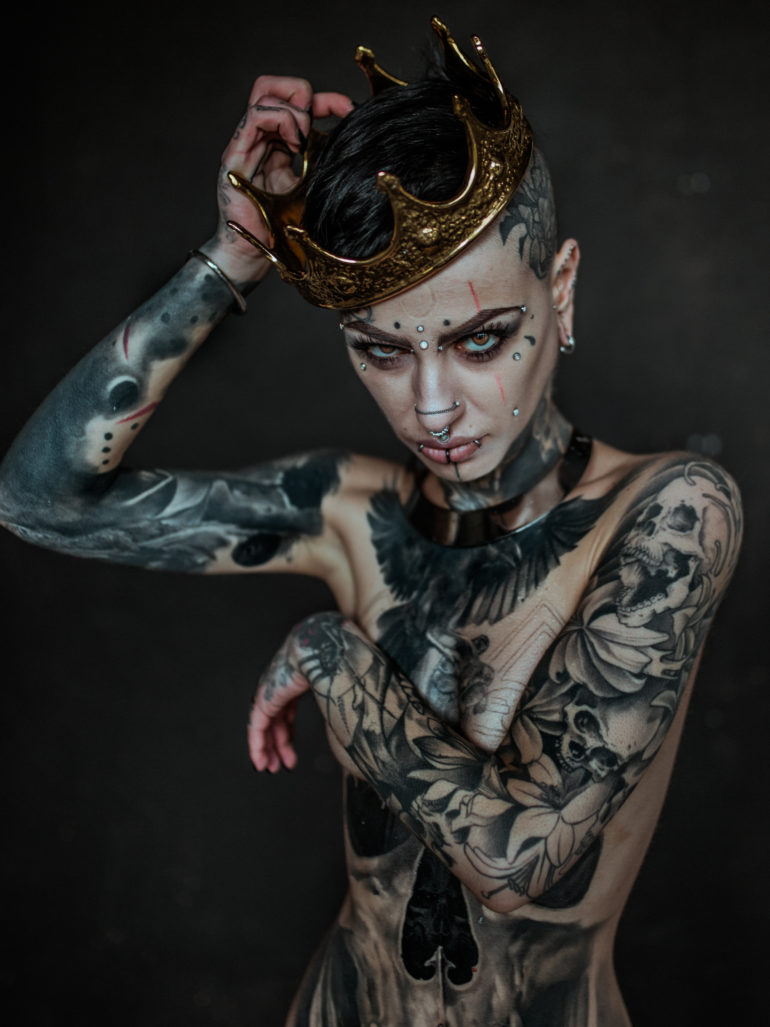
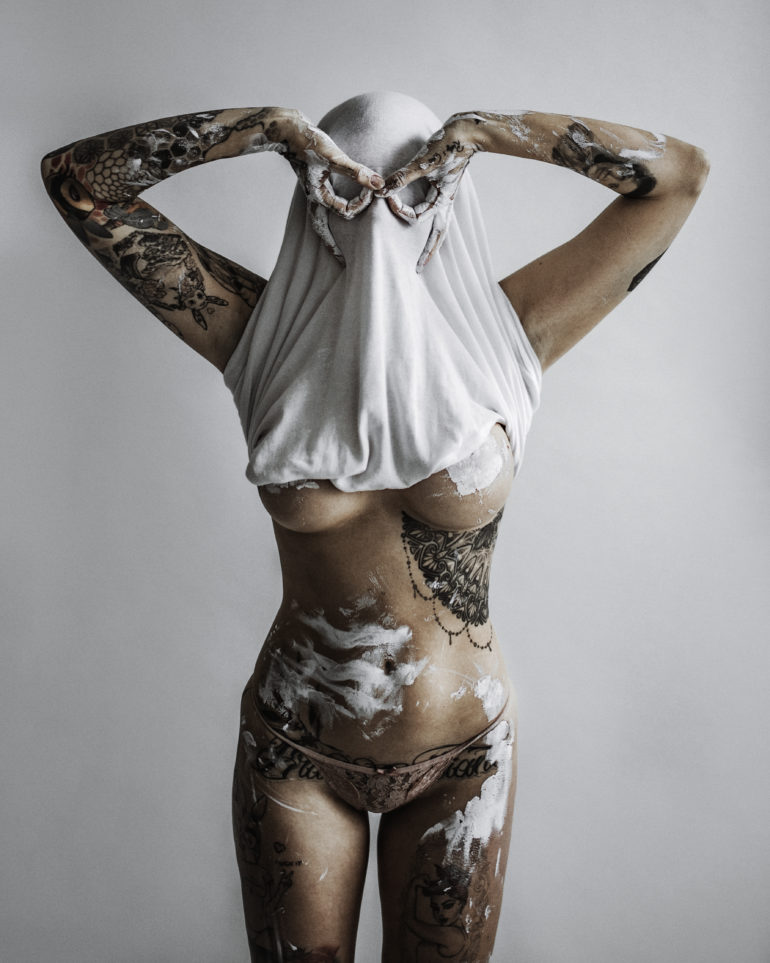
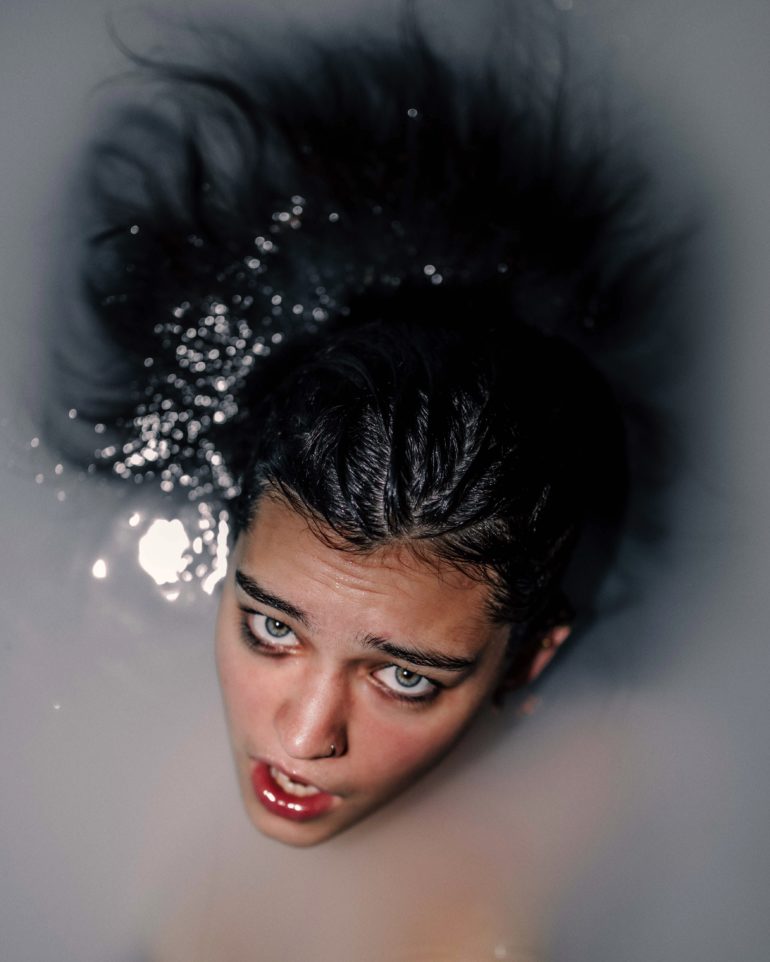
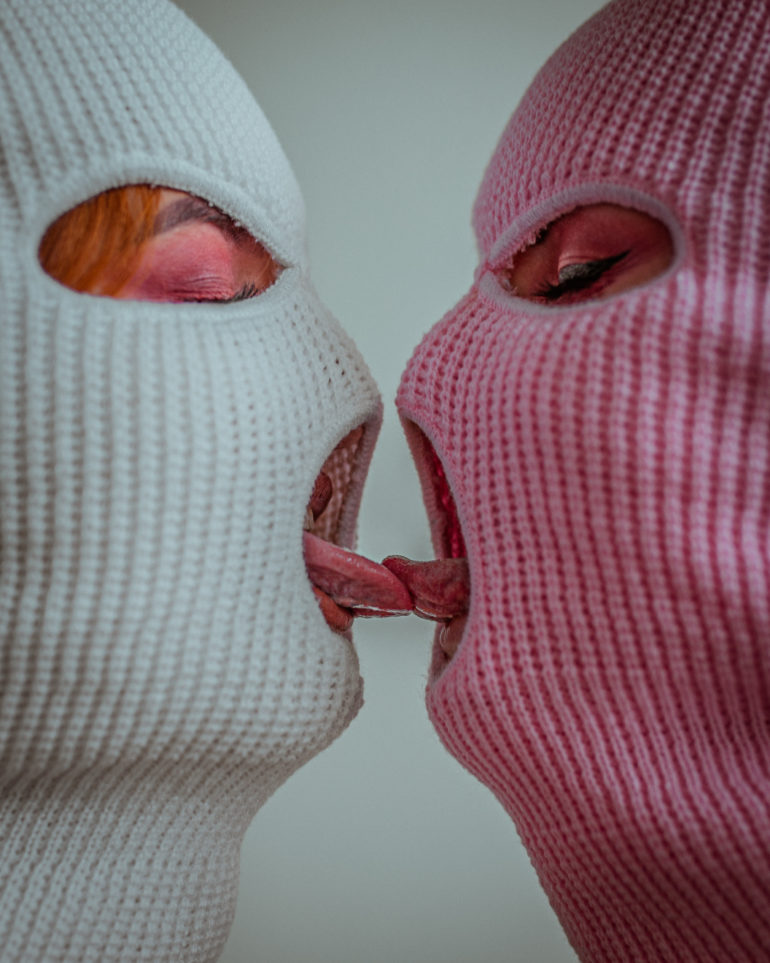
All images by Sudhir Ramman. Used with permission. Check out his website! Want to submit your own series? Here’s how to get featured.


